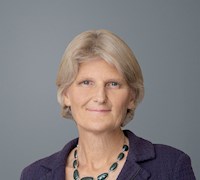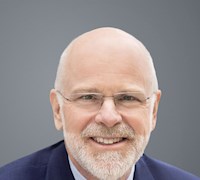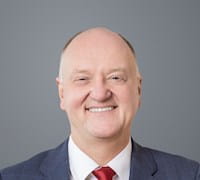
Edtech for All
Chintu Varghese, ’07 (EXP-12), and his company, TabbieMe, are taking part in the transformation of teaching and learning for schools in India and the Middle East.
Edtech for All
Illustration by Chris Gash
Eleventh president of Vassar College in Poughkeepsie, New York, and a professor in the school’s political science department as well as the science, technology, and society program
The Challenge: Over the past several years, in an effort to confront concerns about exclusion, elitism, and racial inequality, many Ivy League and other selective higher-education institutions accepted more first-generation, low-income, and underrepresented racial and ethnic students. However, some of these students felt their needs weren’t being met. How does a college create a sense of belonging for new students who come from different backgrounds?
The Solution: “If you change who is coming to campus, but you do not change the culture and the structures in ways that best serve these students, people can end up feeling very excluded,” says Bradley. She was determined to address this issue at Vassar College.
Through the Engaged Pluralism initiative grant in 2017 from the Andrew W. Mellon Foundation, the college made investments in several areas of campus life, from mental health services to food systems and more.
One crucial change was to residential life. Vassar created a house system. Every student lives in one of nine dormitories. Each building includes a professor—known as a House Fellow—and the professor’s family, as well as a House Advisor, an administrator who specializes in student affairs. The system also includes Student Fellows: six to eight sophomore-level students who each support and mentor a group of 10 to 12 students. The Student Fellows help acclimate the first-year students to the culture at Vassar. Each house has a budget for community programming such as apple picking, skiing, or going to Broadway shows.
The Student Fellows were initially volunteers, but quickly they became overwhelmed by some of the serious social and emotional issues first-year students face in the transition to college life. “Student Fellows, who were sophomores, had seen themselves as advocates for the students, but had not realized how much it would take to be a translator and problem solver—to navigate what students needed and what the institution could and could not do,” says Bradley. “We put these Student Fellows in and had huge expectations for them.”
Vassar asked what the Fellows needed to become successful mentors and take on this extra burden. The answer was greater support from the college. Bradley and Vassar were quick to follow through. A Student Fellow is now a part-time paid position, accounting for 10 hours each week. They undergo intensive training in inclusive leadership, conflict resolution, and problem-solving.
Each year, a new cohort of sophomores takes the training, which adds to the number of trained students in the school at large, Bradley says. Vassar uses the term Student Fellows, rather than Leaders, to keep the focus on the greater Vassar culture rather than particular individuals. The grant has ended, but the college is continuing the program.

“If you change who is coming to campus, but you do not change the culture . . . people can end up feeling very excluded."
The Takeaway: Workplaces can look to emulate the Student Fellow program. Hiring a diverse group of employees brings benefits, but businesses should also do the work to ensure that employees feel included and supported in workplace culture, and that the culture is open to changing to better include the greater diversity of new hires. That means listening to employees’ needs and adjusting expectations. To foster a sense of belonging among staff, orientation programs could be led by midlevel associates who act as corporate ambassadors to new employees to help them feel included in the workplace.
Fifteenth president of Bowdoin College in Brunswick, Maine, stepping down in 2023 after eight years as president
The Challenge: In higher education, the COVID-19 pandemic distinctly changed the collegiate experience—socially, physically, and educationally. How does a college president protect the health and well-being of students and staff while also delivering a quality education and collegiate experience?
The Solution: In spring 2020, when shutdowns went into effect across the United States, Bowdoin’s student body of about 2,000 students, and its nearly 1,000 faculty and staff, switched to online learning for the remainder of the semester. Rose used the summer break to figure out how the college would approach the 2020–21 school year. He created a core group of 15 senior Bowdoin staff to guide decision-making, and sought input from Bowdoin’s board of trustees, other faculty and staff, the community, and scientific advisors—about 100 people overall—to gather a variety of viewpoints at a time of deep uncertainty about the virus and how it could best be managed.
On the basis of what he and the team knew at the time, Rose chose to reduce density on the campus for the school year. He decided on a hybrid educational experience. For the first semester, first-year students would take most classes remotely but be present on campus, while sophomore, junior, and senior-level students would learn completely remotely; the second semester, roles would be reversed.
“It gave our first-year students a chance to get acclimated to the place, to experience being away at college, and to meet some of their faculty in an appropriately safe setting,” he says.
The decision at the time for the split-campus learning brought Rose sharp criticism from a small but vocal group, he says, although the majority of the community agreed with the decision. “There was no perfect way to do it. But in retrospect, I think it was exactly the right thing to do, knowing what we knew at the time,” Rose says.
In addition to social distancing and mask mandates, Rose instituted twice-weekly PCR testing for students and weekly testing for faculty and staff. If students became sick, they were housed in isolation facilities where they ate their meals and took classes remotely. Athletic competitions had been mostly canceled or suspended, and musical clubs were paused in order to avoid viral spread. The school also closed its campus to outside visitors.
During the 2020–21 and 2021–22 school years, Bowdoin’s COVID-19 numbers remained low. This year, Bowdoin is back to operating in a normal environment, without the surveillance testing and mask mandates.
Rose says he felt the school delivered on its two goals for the COVID-19-impacted 2020–21 and 2021–22 school years by simultaneously protecting the Bowdoin community and delivering a quality education. While he says remote learning is not nearly as effective as in-person learning, the feedback from students at the end of the semesters “was stronger than I would have thought,” Rose says. “I think the students appreciated the individual courses they took.”

“There was no perfect way to do it. But in retrospect, I think it was exactly the right thing to do."
The Takeaway: During a crisis, there is no optimal answer, and leaders must often make decisions with imperfect information. Being flexible and gathering the inputs of knowledgeable people across specialties to come up with creative solutions can help with decision-making.
Charles Field Knight Dean of the Cornell SC Johnson College of Business in Ithaca, New York, and Harold Bierman Jr. Distinguished Professor of Management at Cornell University
The Challenge: How does a university combine different schools under the umbrella of an integrated single college in a way that sets up the university for future growth while still maintaining the uniqueness of each school and strengthening the quality of its education?
The Solution: In 2016, Cornell integrated its three accredited business schools under one governing infrastructure within six months, merging the School of Hotel Administration and the Charles H. Dyson School of Applied Economics and Management into the Samuel Curtis Johnson Graduate School of Management.
The plan at the time was to build on the individual programs’ strengths and foster more learning and research opportunities for future growth and development. It happened quickly, and the lack of faculty and staff input before the announcement led to resistance to the change.
Five years later, the stress caused by the rapid integration had left its mark on the combined business college, with heavy turnover at the top levels. In 2021, Karolyi was named the fourth dean of Cornell’s college of business and was charged by the university’s provost with creating a task force to address the many lingering concerns from the integration. Among the key issues to work out: the role of the individual school deans as opposed to the college dean, the responsibilities of the schools versus the college, budget responsibilities, and curriculum development.
Karolyi’s task force spent eight months listening to more than 200 voices in Cornell’s community, discussing the challenges its members faced, and often hearing emotional and passionate viewpoints.
“There’s more resistance to change in higher education because there is more anxiety about the potential loss of the legacy, and in our case, with the transition, their contributions in their respective schools, of which they were rightfully very proud,” he says.
The process eventually led to a 100-page report that included 35 recommendations, with Cornell’s top leadership endorsing the plans in October 2021.
Among other changes, Karolyi and his team centralized the budget structure, strengthened the alignment of faculty across schools along disciplinary lines, and better integrated support functions, like finance and administration, across schools. Recently, the college decided to close one of its two one-year MBA programs, to launch a new department of real estate, and to build in a focus of sustainability across all three schools.
Although it took significant effort to work out the lasting issues, Cornell’s combined business college is now on the right footing, Karolyi says, pointing to successes including the college having its best fundraising year, students applying in large numbers, and the hiring of 21 faculty members last year. The college of business now has 250 faculty members, 485 staff, and 4,100-plus students.
“The positive momentum we’re experiencing now as a college is because we spent the time listening to our community,” Karolyi says.

“The positive momentum we’re experiencing now as a college is because we spent the time listening to our community."
The Takeaway: Many significant shake-ups at organizations come from the top down. But to successfully effect change throughout, it’s critical for those people tasked with fulfilling the change to listen to the community and hear their voices.
Changes will still need to occur, but those who have to implement them can go forward understanding the impact of the actions they need to take.

Chintu Varghese, ’07 (EXP-12), and his company, TabbieMe, are taking part in the transformation of teaching and learning for schools in India and the Middle East.
Edtech for All
Sailing provides Elise Sivilay, ’12 (EXP-17), with lessons about leadership, delegation, and mental focus.
Leadership Lessons from Sailing
Leading a community development corporation, Hope Knight, ’96 (XP-65), aims to write a new future for Jamaica in Queens, New York.
Renewing a Storied New York Neighborhood